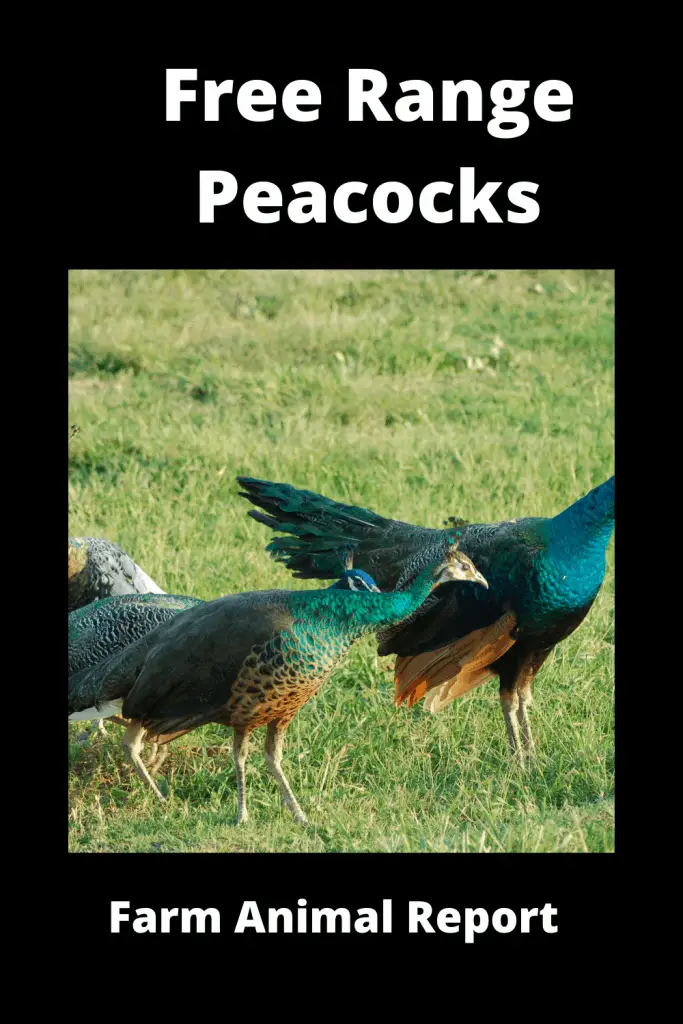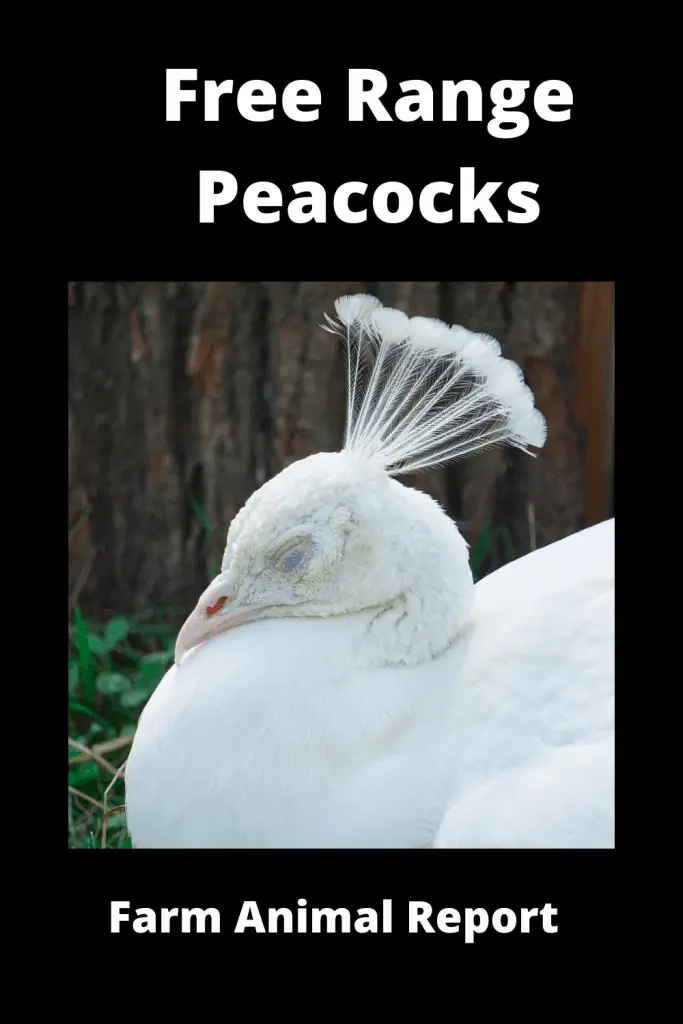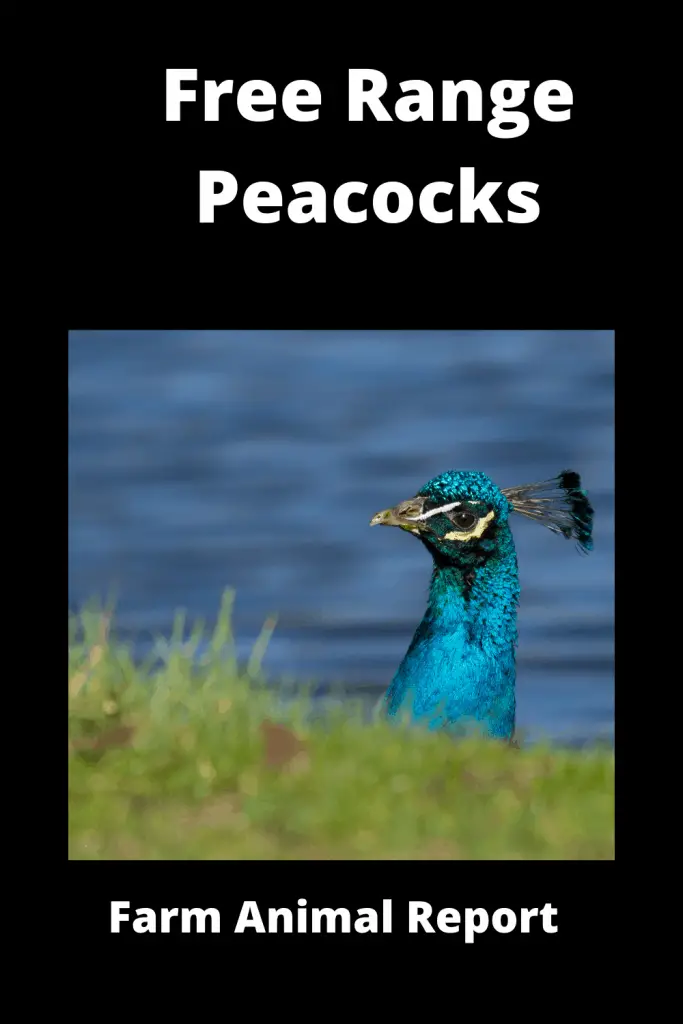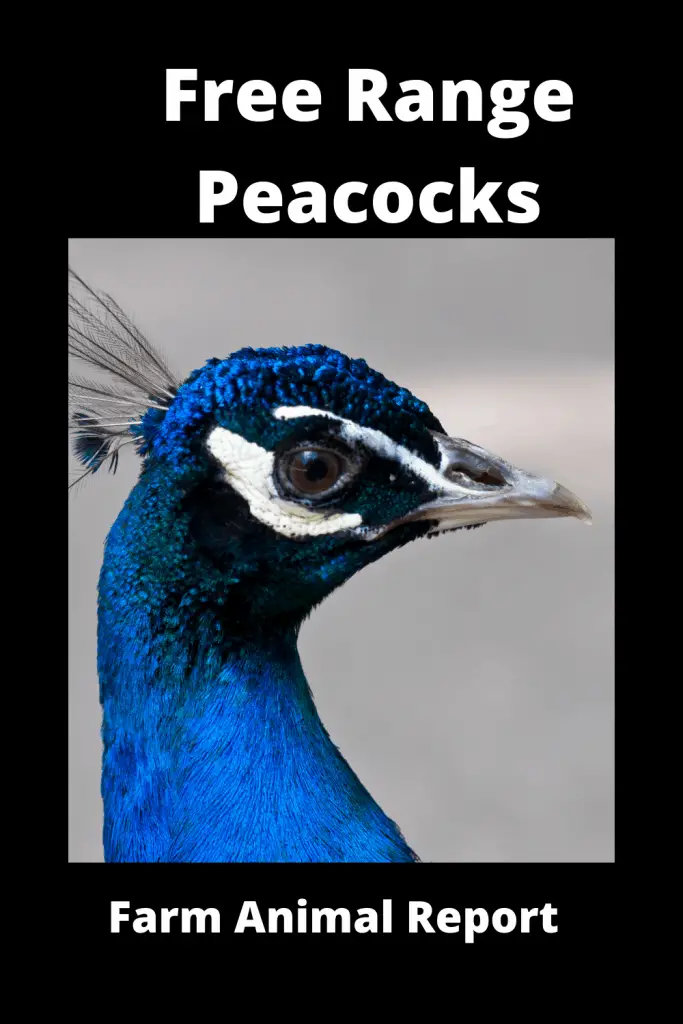Author: Dr. John Abbas
DVM M. Phil
How To Free Range Peacocks A Quick Insight
As a general rule Peafowl are very beautiful and charming birds because of their plumage. They are wild by nature and love to stay at that place where they find everything updated and necessary to survive. Blue peacocks are mostly kept domesticated but a lot of precautions have to take while domesticating them. They are ground birds and like to stay in flocks.
Free Range Peacocks – There is nothing more beautiful than having a full-tailed peacock and some peahens free-roaming around your property.

See Amazons Educational Resources on Raising Peacocks
They need plenty of food, space to strut, tall trees to roost in, like neighbors, and don’t like to be chased. If you provide all these basic necessities and securities to peafowl, they will love to stay with you and would return back to it.
Here, we will have a bird’s eye view on some important points related to free-ranging the peacock with a few reasons and logic.
As it has been mentioned that peacocks like to stay in free-range settings but only if you fulfill all the requirements they need to stay happy and sound. Unfortunately, if you fail to meet their living standard criterion, they will not come back to your place again and will find some new place to be settled in.
There are many arrangements which you have to do if you plan to keep a free-range peacock. They are social creatures.
See Our Extensive Guide – 10 Ways to Make Money Peacock Farming
When you introduce them to a new place, they usually don’t like it and try their hardest to get back to their old home.
It is advisable to confine/restrict them to an enclosure especially for 3 weeks or more, as they can fly to the nearest places and can undergo any mishap. So, it is always important to acclimate them to a new place by taking all necessary measures.
How to Win a Peacocks Trust
This is a very important thing to do, during the early days of confinement, you should try your best to gain their trust and make them feel comfortable with you. Offer them plenty of meals and treats. These things will help you to be closer to them and finally, they will like to stay with you.
You can stop giving treats after a few weeks of training, when you become sure that, they will not go anywhere.
When you first let them out to free-range, watch them constantly. Head them off and herd them back if they start to wander too far: you must teach them your boundaries. You can “herd” peafowl by circling ahead until you are a few feet in front of them (following straight behind just makes them go faster), then face in the direction you want them to go, and spread your arms and hands, with the hands at about their head level.
They should turn around and start walking in the direction they want. But they may try to dodge around you, depending on how determined they are. It’s not quite as hard as herding cats.

Training Peacocks when They are Young
If you are planning to free-range peacocks, then remember, you should get a young peacock preferably yearling. The logic is, it will easily be accustomed as Home to your place or farm and will not go anywhere away from the farm boundary.
Before purchasing a young peacock, keep a small building ready for them such as a chicken house.
The most important training step is to clip the wing of the peafowl prior to releasing them into the housing area. The peafowl learns very quickly that they can’t fly up to the top of the building or across the flight pen area.
This inability to fly seems to calm the peafowl down a lot and makes it much easier to tame them down. Roosting areas for the peafowl will need to be only 3’ or 4’ off of the ground so that the peafowl can jump up on them and so that they won’t injure themselves when they jump down to the floor. This all is a part of training them in free-range settings from an early age.
Peacock can fly for short distances but loves to walk on foot most of the time. They have great eyes and ears, but they are poor at understanding the source of the sound. They prefer areas with bare soil or short grass to show their tails. They will look to anything above the ground to get a better view (in a car, trash bin, gate, roof, etc.), which means they will accumulate.

Train them to stay away from places you don’t want by throwing vinegar water in them. During heavy rainfall, they will use any covered area to stay dry. They hide in a piece of wood by going under the trees. They fly away from predators and stay in the tall trees at night. They are leery of tall grass and dense brush, but will occasionally inspect such places, especially hens looking for a hidden nest site.
How to Protect Your Peacocks from Predators
Predators pose a risk of dangers for peacocks and make them frightened. Peacocks love the safe and secure place and become annoyed by predators. While free-ranging peacocks, it is usually referred to
free-range them during the day time, and an enclosure is designed to keep them safe from predators during night time.
This is the part of their training that they return back to their enclosure at night and stay there safe and lay eggs without any interference.
NOTE: Wherever you keep your peafowl, make sure it is dry and warm, as muddy or wet conditions can cause disease or tail feather breakage. A large pen surrounded with chicken wire, with a wooden shelter or hen house with a nesting area, complete with a warming light, is a good example for a pet peacock habitat.
Protecting Peacocks from Cold Weather
Peacocks like warm weather. But their roosts help them to stay warm during winters. Extreme cold is not ideally desirable for them. So, it is recommended not to free-range them during extreme cold as it can put a negative impact on their overall health.
Also arrange some coops, enclosures, or barns to limit their movement inside to protect them from extreme cold. Additionally, after a month has passed, pick a day when the weather is good and allow the peafowl to come out of their enclosure on their own. Do not force them out of the enclosure. Monitor their behavior and allow them to investigate their surroundings.
Let the peacock free-range for a half a day and then herd them back into their enclosure. Repeat this process for several days, allowing the peacock to free-range for longer periods of time each day.
Again. This must be known that it is enjoyable to see peacocks in free-range but special training, patience, and time is required to make them realize their boundaries.
What Types of Food do Peacocks Like
Peacocks like everything. They can be fed grains, bread except for meat or dairy. Feed them in the morning after they come down from their roosts in the trees and in the evening an hour or so before dark. In winter they appreciate lunch, as well. During summer, they eat plants and catch bugs, especially grasshoppers, spiders, moths, and termites.
So, this is also important for peacock owners to ensure the maximum supply of food for the peacock in free-range settings. This will encourage them to like the environment and become habitual of it.

Peacock Tips
Take care and give more attention to them during the mating season. There must be special arrangements for them in free-range settings where they can spur and mate.
There must be special care given to baby peacocks as they are more prone to predator attacks.
Always monitor any abnormal behavior in the peacocks and note any abnormal signs and symptoms. Taking care of their health in free-range settings is quite important and this can make them feel happy and safe there. In addition to that, you need to train peacocks and do work if they misbehave and show aggression.
You should also check your peafowl for external parasites like mites, lice, and chiggers.
Since peafowl are not common pets or farm animals, there is no established vaccine schedule for them, but avian pox, blackhead disease, and coccidiosis are always a concern. Ask your vet how to prevent and treat these diseases.
In short, a free-range housing system can be proved excellent and enjoyable for peacocks, if it contains all the necessary facilities which peacocks need to live a better life.
NOTE: This all takes frequent training and much of your efforts.
Author: Dr. John Abbas
DVM M. Phil
REFERENCES:
Gadagkar R. Is the peacock merely beautiful or also honest? Curr Sci (Bangalore) 2003; 85: 1012-20
Sathyanarayana MC, Rathinasabapathy B. Notes on the feeding ecology and activity patterns of the blue peafowl. J World Pheasant Assoc 1990-92; 15 & 16: 97-101.
Sharma IK. Social and sexual behavior of peafowl. Environ Aware 1978; 1: 169-71.
Galusha JG, Redd JM. Population structure and daytime behavior of Indian peafowl (Pavo cristatus) on protection island, Jefferson County, Washington. Pavo 1992; 30: 75-86.
https://www.peacocksuk.com/peacock-information/


